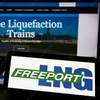Australian LNG investment is at risk, but not as much as feared
The Australian oil and gas industry is telling everybody that a second wave of investment in liquefied natural gas (LNG) plants is at risk unless labour and regulatory costs are cut.
The companies are unlikely to get all that they want. In fact they may not get very much at all out of the labour unions and the federal and state governments.
But it may not matter that much, because even with its high costs Australia remains one of the best places to invest the billions of dollars needed to develop a large-scale LNG project.
Australia currently has seven LNG plants under construction. When all are completed by 2018 the nation will be the largest exporter of the super-cooled fuel, overtaking Qatar.
Australia's three operating LNG projects produce about 24.2 million tonnes of LNG, with the seven developments being built slated to boost that by another 61.8 million tonnes.
The problem for the oil and gas companies spending some $192 billion on the seven plants is that costs have increased well beyond the initial budgets, while the certainty over LNG demand and pricing has eroded somewhat.
That's not to say that current LNG projects won't have buyers for their fuel, as the bulk of the planned output is already contracted.
However, there are still projects with a total capacity of 31.5 million tonnes which are awaiting final investment decisions, and another potential 65.8 million tonnes of expansions under consideration.
It is this second wave of investment that the industry is warning is at risk.
Chevron, which is developing the $54 billion Gorgon and $29 billion Wheatstone projects off Western Australia, is one of the companies leading the fight against high costs.
Roy Krzywosinski, managing director of Chevron's Australian unit, told the Australian Petroleum Production and Exploration Association conference here on Tuesday that the "window of opportunity to turn things around isn't a couple of years anymore, the clock is ticking."
The heart of the issue is the high labor costs and union militancy that have driven up project costs, with Krzywosinski saying Chevron has suffered more than 1,000 "disruptive" right of access claims by unions since 2009.
Chevron, in a theme echoed by other companies building projects in Australia, wants the government to amend labour legislation to limit the rights of unions and allow for more flexible work contracts, as well as making it easier to import workers from overseas.
The companies also want lower regulatory burdens and more certainty on taxes, which have been subject to change as federal and state governments switch between the two major parties.
With the conservative Liberal Party now controlling the federal government, and every state bar South Australia, it seems a good opportunity to overturn the workplace legislation put in place by the former Labor Party administration.
But Liberal Prime Minister Tony Abbott will be well aware tht making the workplace less regulated, removing worker protections and trying to restrict unions played a big role in the defeat of John Howard's Liberal government in 2007.
It seems more likely that some flexibility will be re-introduced in labour laws, but the best thing the industry can hope for from government is a lessening of red and green tape, and the scrapping of the carbon tax.
Union successes in gaining wage increases may also be over. The days where a cook can earn more than $300,000 a ear working on an offshore facility are likely to come to an end.
Wages were driven to among the highest in the world by the fact that building seven major projects simultaneously overwhelmed the available supply of suitable workers.
But this will fade over the next few years, and resource companies are likely to become much more aggressive in negotiating contracts.
However, it's unlikely that wages will fall dramatically, leaving Australia as an expensive place to do business, with construction costs believed to be some 40 percent higher than at equivalent LNG projects in the United States.
The question then becomes, given that the industry is unlikely to get all it wants on the cost and regulation front, is Australia's boom in LNG going to end in 2018, with the projects currently being planned either being scrapped or deferred indefinitely?
DEMAND ASSUMPTIONS, GLOBAL RISKS
The first assumption that you have to make is that the estimates for LNG demand over the next decade are accurate.
By 2025 global LNG demand will be about 450 million tonnes, according to estimates by industry consultants Wood Mackenzie, with a supply shortfall of about 100 million tonnes.
This scenario offers justification to continue to develop LNG projects, but the key is going to be costs.
While the United States currently enjoys a cost advantage over Australia, any new projects beyond the 60 million to 70 million tonnes likely to come on stream are likely to have higher costs.
Developments will be forced to compete for skilled labour and will also face higher input costs as rising gas demand for export will boost U.S. gas prices from their current low levels.
Other prospective LNG areas, such as the east coast of Africa, also suffer high costs, although more because of remoteness and lack of existing infrastructure.
Political risk in Mozambique is also significantly higher than in Australia, and project developers there may struggle to secure financing from increasingly risk-averse bankers.
Canada is also touted as a source of big LNG volumes, but developments there will have to overcome geographic obstacles in the shape of the Rocky Mountains, native land title issues and environmental activism.
All these issues mean that Australia's LNG future isn't as endangered as the oil and gas companies are perhaps making out.
What is clear though is that costs will at least have to be better controlled and industry, governments and even the labour unions will all have to try harder to get along with each other.
The most likely end result is that while these issues are sorted out, and also while everybody waits to see if LNG demand is going to be as strong as forecast, the timelines for project approvals will start to slip.
The second LNG investment boom in Australia, if it happens, will be a lot more cautious and drawn out.
By Clyde Russell











